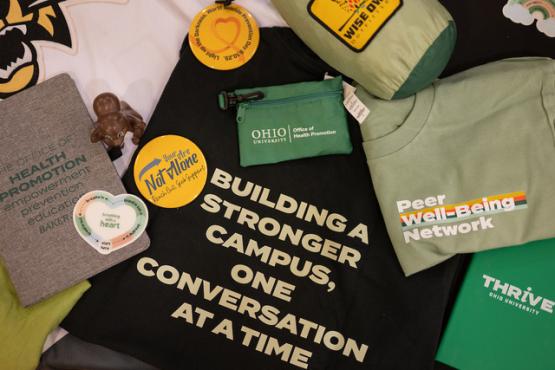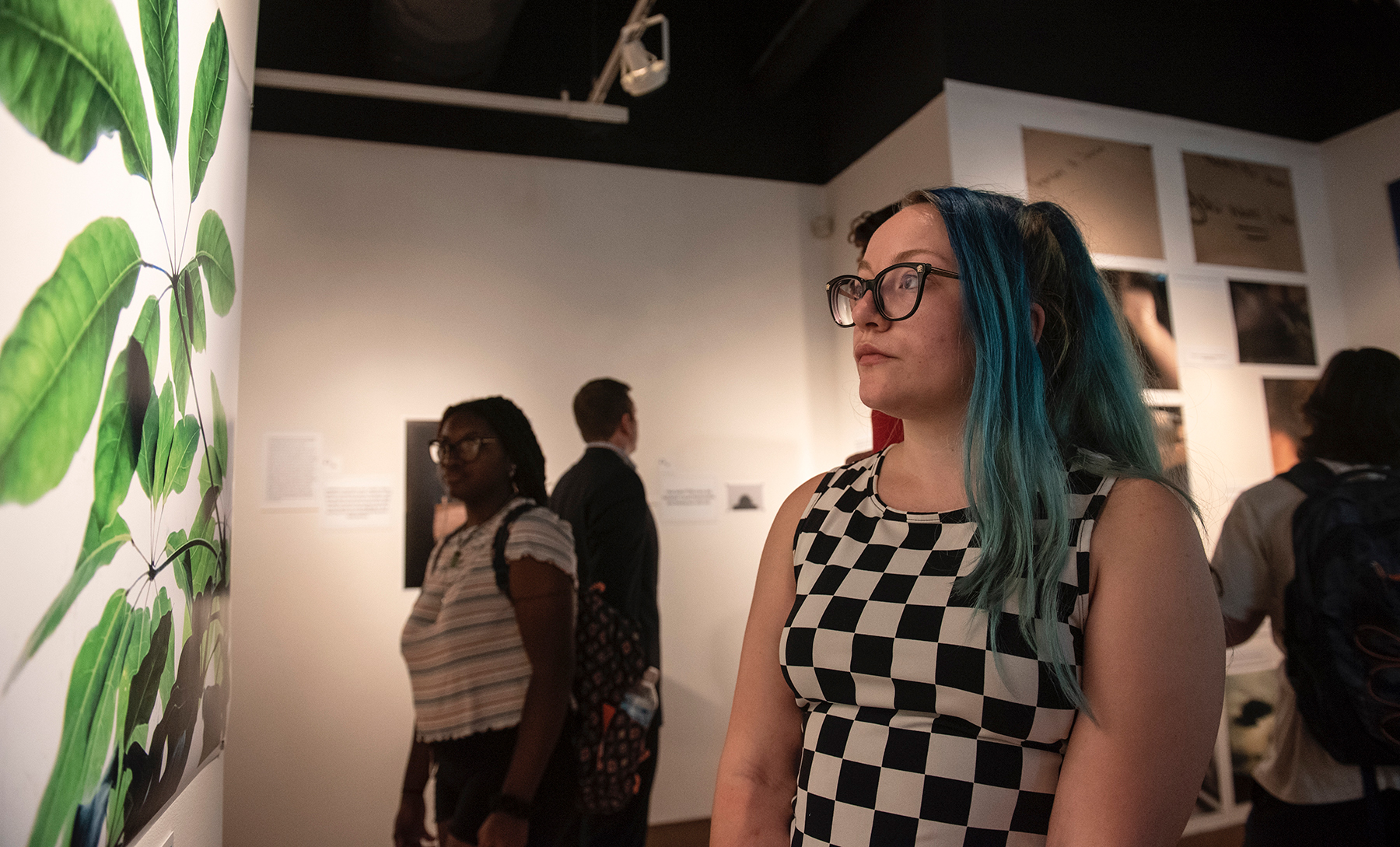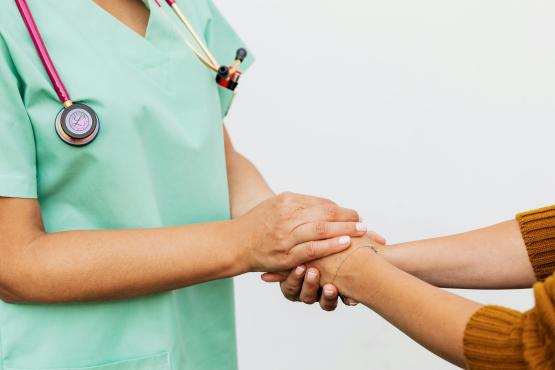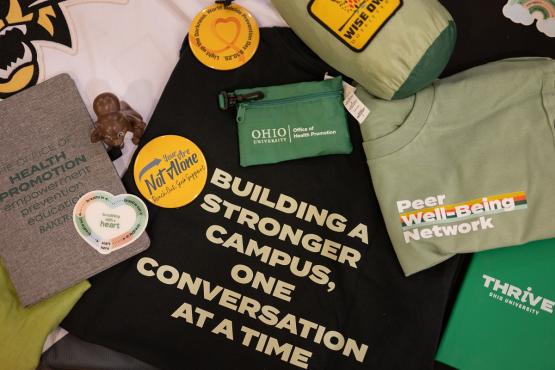
Editor’s Note: View an accessible version of the “Through the Survivors’ Lens” exhibit.
“Through the Survivors’ Lens” featured 52 photographs submitted by 20 survivors of childhood trauma, sexual assault, dating violence, stalking, harassment, and domestic violence to document their responses to prompts such as: What does survivorhood look like to you? What did the experience of trauma look like to you? How does your assault or trauma still affect you?
The exhibit, made possible by the Women's Center, Survivor Advocacy Program, Health Promotion, Counseling and Psychological Services, the College of Fine Arts and University Galleries, Office of Instructional Innovation, Ohio University Libraries, Better Bystanders, Ambassadors to the Survivor Advocacy Program, and the Student National Medical Association, continues Ohio University’s commitment to providing a compelling, visual means for provoking thought and reflection within the community, building on 2017’s Monument Quilt and 2018’s “What Were You Wearing” exhibits.
Ohio Women, in collaboration with the Office of Instructional Innovation, GRID Lab, and the Women's Center, invites you to experience the exhibit yourself through the immersive, interactive, 360-degree experience:
To start, turn your sound on and use the blue icons to navigate through the exhibit.
Organizers worked with survivors to capture the photographs and captions in response to the prompts for the exhibit. To protect the privacy of survivors, demographic and contact information of survivors were not collected.
Organizers hope that with more knowledge of what can be done with virtual exhibits that future projects will provide even greater opportunities for participating survivors in how their stories are shared and heard.
Through the Survivors’ Lens Poem
by Some of Us
You can see the darkness in our pictures.
But you should absolutely see the strength too.
We are Warriors.
Frustrated Warriors wanting to be ourselves,
but still having to deal with everything that's inside:
a cacophony.
a voice
broken glass
an empty jar
a sweater
a teddy bear
hair
a failed test
We are all reaching for that one space that is safe... that is comforting.
We take refuge in different places.
Am I ready to talk about it yet?
Time continues,
We continue.
Ours is not a stagnant story,
and it is often at extremes.
I never identified as a victim or a survivor.
I am a person that had something bad happen to them.
We get back up.
We are strong.
We climb mountains.
We are surviving.
This is a movement.
Among fellow Warriors, our feelings count.
They should count to you too.
Will you prevent this from happening to others?
Will you hold them accountable?
Do you see me now?
What inspired the exhibit?
When we began to formulate what our next exhibit would be, we heard from a survivor who had used photography as a means to show others her experience. We looked to photovoice, a methodology anchored in participatory action research, to support other survivors so they could also take photographs that represent what they would like to communicate. Scholars have noted the use of photography as empowering to survivors. As Rolbiecki, et al. (2016) explain: “Photovoice goes beyond verbal articulation and allows survivors to use photographs to help conceptualize their thoughts and feelings regarding their experiences and process of healing. This provides vulnerable populations the opportunity for an alternative means of expression, because their voices are often silenced as a result of institutional oppression.”
What prompts were provided to participants of the exhibit?
The organizers of the exhibit held workshops, and provided a website with guidance, to support participants in considering the use of photography as a medium to respond to the following prompts:
- What does survivorhood look like to you? OR What do you hope survivorhood looks like?
- What did your journey, or what do you hope your journey, looks like from victim to survivor?
- What did the experience of trauma look like to you?
- How does your assault or trauma still affect you?
- Tell the story of how an active bystander could have changed the outcome of your assault or trauma.
- Since sexual assault may impact those with marginalized identities differently, how has the assault or trauma impacted you in regards to your identities or your community?
In some cases, participants created their own prompt. Each photograph has a caption, and some participants chose to also provide longer context pieces about their experiences.
How was the poem created?
The poem at the opening of the exhibit, and which opens this article, was created by utilizing quotes from the discussion amongst participants at the workshops hosted by organizers. Participants were asked to discuss the similarities and differences of their photographs, and quotes were written down with their permission. There is some poetic license to the poem, but we hope that it demonstrates some of the similarities and differences. For example, despite the title of the exhibit, not all participants identify as survivors or victims.
Where can I see the exhibit in person?
The exhibit is available to tour at regional and extension campuses, and was recently shown at OHIO Lancaster as part of their Take Back the Night in October. To arrange for the exhibit to visit you, please contact womenscenter@ohio.edu.
Where can I view an accessible version of the exhibit content?
An accessible version of the “Through the Survivors’ Lens exhibit content is available in a traditional gallery format.
How can I report sexual misconduct, relationship violence, or stalking?
At Ohio University, your safety as a member of our University community is of paramount importance. If you have experienced sexual misconduct, relationship violence, or stalking, we want you to know that there are resources available to help you. The University is committed to providing a prompt, equitable, effective, and fair response to address reports of sexual misconduct. If you have experienced sexual misconduct, relationship violence, or stalking, you have options for reporting that conduct.
- If you would like to report sexual misconduct, relationship violence, or stalking to the University, please contact University Equity and Civil Rights Compliance (ECRC) located in Lindley 006 on the Athens campus. You may also call them at 740-593-9140, or fax them at 740-593-9168. You may e-mail them at equity@ohio.edu or titleix@ohio.edu AND/OR on the University Equity and Civil Rights Compliance website.
- If you would like to report sexual misconduct, relationship violence, or stalking to Law Enforcement, there are two options. For criminal acts occurring on campus, please contact Ohio University Police Department located at 88 University Terrace 135 Scott Quad, on the Athens campus. You may also call them at 740-593-1911 or call 911 for emergency. You may e-mail them at: police@ohio.edu. For criminal acts occurring in Athens, please contact the Athens Police Department, located at 11 North College Street, Athens, Ohio. You may call them at 740-592-3313 or call 911 for emergency. Criminal Acts Occurring Elsewhere: Emergency CALL 911. Please contact the local law enforcement office where the crime occurred.
- Additional avenues to reporting are available to Ohio University regional and extension campus members and are listed on the University's Sexual Assault Prevention website.
What confidential resources are available for survivors?
At Ohio University, your safety as a member of our University community is of paramount importance. If you have experienced sexual misconduct, relationship violence, or stalking, we want you to know that there are resources available to help you. The University is committed to providing a prompt, equitable, effective, and fair response to address reports of sexual misconduct.
If you would like to talk with a confidential resource on campus, there are options.
- You may contact the Survivor Advocacy Program at 740-597-7233 (24/7), or by visiting them in Lindley 038 on the Athens Campus. You may email them at survivor.advocacy@ohio.edu.
- You may contact Campus Care at 740-592-7100, or by visiting them on the 1st Floor of Hudson Health Center, on the Athens Campus.
- You may contact Counseling and Psychological Services at 740-593-1616, or by visiting them on the third Floor of Hudson Health Center on the Athens campus.
- Community members, as well as faculty and staff, in Athens, may contact the Survivor Advocacy Outreach Program at 740-591-4266.
- Additional resources are available to Ohio University regional and extension campus members and are listed on the Sexual Assault and Prevention website.
What other survivor-centered programs does Ohio University offer?
In addition to the survivor-centered arts based programming that occurs at the start of each fall semester, Ohio University is proud to annually host Take Back the Night the first Thursday of April, in addition to survivor speakers, film showings, trainings, and workshops throughout the year.
Ohio University also supports survivors daily through the Survivor Advocacy Program.
Feature photograph: by Hannah Ruhoff, BSVC ’20





